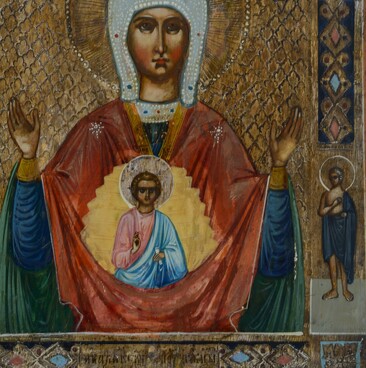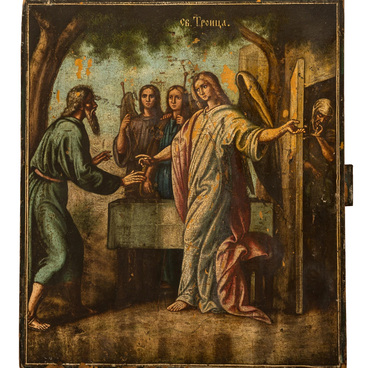In 1554, the Council of the Russian Church permitted painting such icons. A century later, in 1667, the council imposed a ban based on the fact that God the Father was never seen in the flesh. “As Christ was seen in the flesh, He is so painted… just like the Most Holy Theotokos and other saints.” The council also forbade the depiction of the Holy Spirit in the form of a dove, except for the image of the Baptism of Christ, when the Holy Spirit indeed appeared in this form. The Gospel of John reads: “No one has seen God at any time. The only begotten Son, who is in the bosom of the Father, He has declared Him.”
The image is framed by ocher-colored fields, the background is covered with gold paint. In the center of the icon are Christ and the Ancient of Days sitting on clouds, seraphim and cherubim hover at Their feet, the Holy Spirit is depicted above Their halos in the form of a dove, between Them is the orb and cross. God the Father and God the Son are flanked by the images of the praying Mother of God and John the Baptist (this element is borrowed from Deesis). The symbols of the evangelists are featured in the four corners on a red background, the composition is crowned by seven angels led by Archangel Michael.
The “tin” folds of the robes, the rays emanating from the Holy Spirit, the wings of seraphim and cherubim are skillfully depicted. The miniature faces are painted with a rather contrasting transition from the dark base color — sankir — to the whitewash highlighting the protruding parts. This image, painted in the 19th century, is an example of the traditional technique of Old Russian icon painting preserved by Russian artists (possibly Old Believers).


